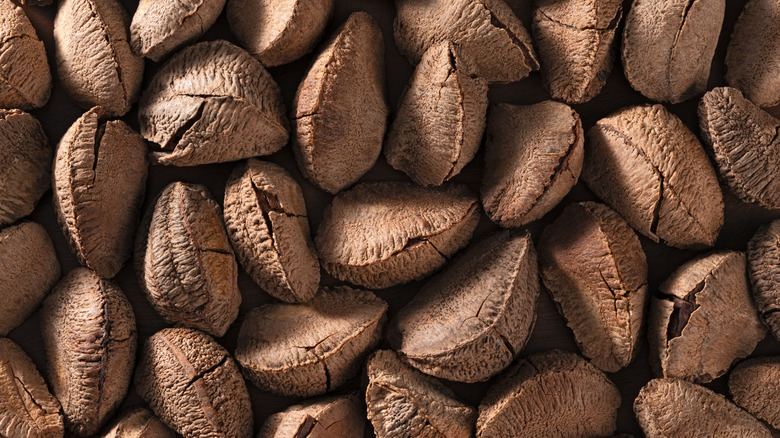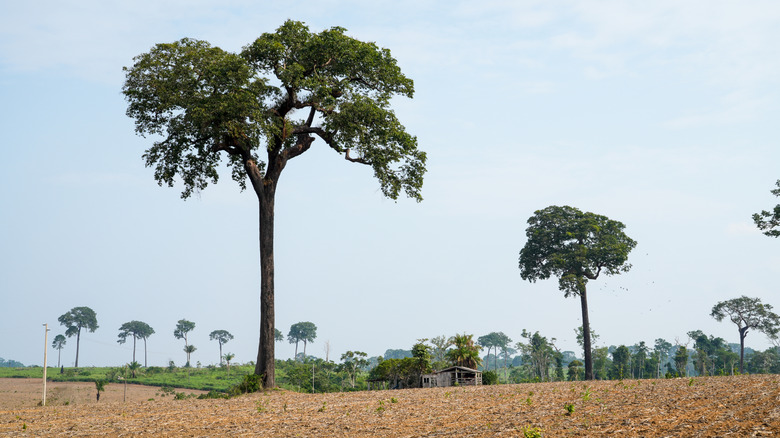George Washington's Favorite Snack Probably Didn't Help Out His Teeth
When you search YouTube for how to crack a Brazil nut, the top video shows someone cracking it open with a hammer. That gives you an idea of the strength of George Washington's jaw, considering he was said to crack open the nuts with his teeth. No, he didn't have wooden teeth; that's an age-old myth, but what his dentures were made of might surprise you. When Washington became president in 1789, he had one real tooth left, and the rest were dentures made of cow's teeth. Washington later got a new set of teeth made from hippopotamus tusks. Now, those could probably do some cracking.
Washington's teeth weren't the only thing he had to worry about with Brazil nuts. The oft-overlooked nut is loaded with health benefits, as it's high in vitamins, protein, magnesium, copper, and zinc. However, it's also rich in selenium, an element that plays a vital role in thyroid and immune health. Brazil nuts are so high in the chemical element that eating about 50 of them becomes toxic, and you risk heart or kidney failure and breathing problems. It's a nut you should choose, but be sure to limit your intake to one to three a day.
Where do Brazil nuts come from?
If you were doing a fantasy football-style draft of nuts, Brazil nuts would probably be one of the last picked. They're used as filler in mixed nuts because they take up space, but they're one of the hardest to grow and are becoming increasingly rare due to deforestation. The nuts grow in pods on trees in the Amazon rainforest that grow up to 160 feet tall and live to be 500 to 1,000 years old. So it's entirely possible that you could have eaten a Brazil nut from the same tree that George Washington did.
If you eat too many, they're a hazard to your health, but they're also treacherous when they fall from the tree. The nuts fall to the ground in pods at speeds of up to 50 mph before being harvested. Each pod contains about 10 to 25 nuts, making the process of collecting, cracking, drying, and shelling each nut labor-intensive. If the nuts are damaged in the process, they are used for oil, and have become popular in cosmetics and as one of many cooking seed oils.
When it comes to dental health, George Washington might have been on to something, though. Research suggests that adding Brazil nut oil to toothpaste may help prevent plaque and possibly cavities, but it's doubtful that oil pulling was on his mind. However, it would have helped with his stained teeth from the amount of wine he drank.

